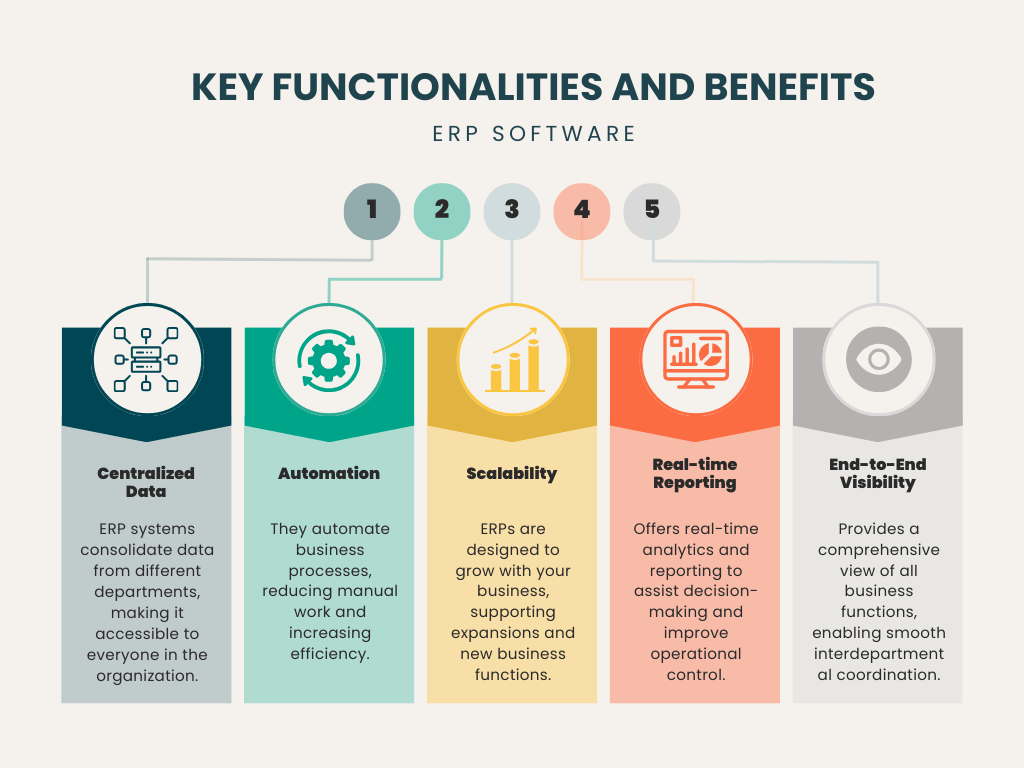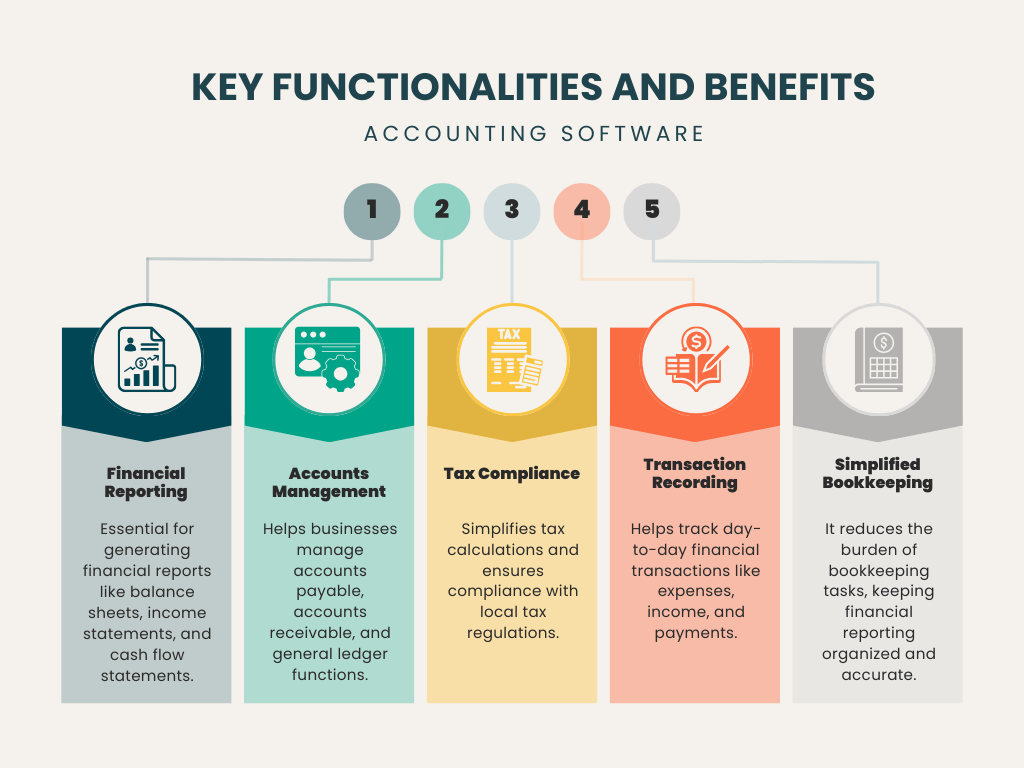5 Key Differences Between ERP and Accounting Software

Introduction
In today’s digital age, businesses have a wide range of software tools designed to streamline operations, increase efficiency, and enhance decision-making. Two of the most commonly used types of software are Enterprise Resource Planning (ERP) systems and accounting software. While both are crucial for managing financial data and operations, they serve distinct roles and offer different functionalities.
Understanding the key differences between these two systems is critical for businesses when selecting the right solution. By doing so, organizations can ensure they choose the software that aligns with their needs, goals, and future growth strategies.
What is ERP Software?
ERP Software is a comprehensive suite of integrated applications designed to automate and manage various business functions, including finance, manufacturing, supply chain, procurement, human resources, and customer relationship management (CRM).

What is Accounting Software?
Accounting Software is primarily focused on managing a company’s financial operations. These systems are designed to help businesses record transactions, track financial data, manage accounts payable and receivable, and generate financial reports. Unlike ERP software, accounting software is typically more limited in scope, focusing mainly on the financial aspects of the business.

Key Differences Between ERP and Accounting Software
1. Scope of Functions: What Each System Covers
- ERP Software covers a wide range of business operations, from financial management and human resources to inventory control and customer relationship management. It provides a comprehensive solution that integrates various business functions into a single system.
- Accounting Software, on the other hand, focuses primarily on the financial aspects of the business, including bookkeeping, invoicing, payroll, and financial reporting. It does not provide the same level of integration with other business functions like procurement or manufacturing.
2. Integration Capabilities: How They Interact with Other Business Systems
- ERP Software is highly integrated, connecting multiple business functions and departments to work together in real time. For example, an ERP system can integrate with CRM tools, HR software, and inventory management, allowing seamless data flow across systems.
- Accounting Software generally operates as a standalone system focused on financial data. While it can integrate with some business tools (such as payment processors), it lacks the broad integration capabilities of an ERP system.
3. Target Users: Who Uses Each System
- ERP Software is ideal for larger businesses or those that require comprehensive, enterprise-wide software to manage operations. ERP systems are commonly used by manufacturers, retailers, distributors, and service-based companies that need to coordinate several departments and functions.
- Accounting Software is generally suited for small to mid-sized businesses (SMBs) or startups that need to manage their finances and bookkeeping without the complexity of an ERP system.
4. Customization: Flexibility and Adaptability
- ERP Software tends to be highly customizable, offering modules and features that can be adapted to suit specific business needs. Businesses can tailor an ERP system to accommodate their industry requirements, growth projections, and workflow.
- Accounting Software usually offers limited customization. While it can be tailored for specific accounting needs (e.g., multi-currency handling), it is generally less flexible than an ERP system.
5. Cost Implications: Financial Considerations for Both Systems
When to Choose ERP Over Accounting Software
- Growing Businesses: As your business expands, the need to manage multiple departments and functions becomes more complex. An ERP system can centralize data from all aspects of your business and offer greater scalability, which is essential for supporting growth.
- Businesses with Complex Needs: Companies that require detailed tracking across multiple functions, such as manufacturing, supply chain, and human resources, will benefit from an ERP system’s comprehensive capabilities.
When to Choose Accounting Software Over ERP
- Small Businesses or Startups: If your business is in its early stages and primarily focused on managing financial transactions, accounting software can be a more cost-effective and simpler solution.
- Businesses with Simple Financial Needs: Companies that don’t require complex integrations with other business functions and only need to handle accounting, invoicing, and payroll will find accounting software sufficient.
Conclusion
While both ERP and accounting software play vital roles in managing business operations, understanding their differences is crucial to choosing the right tool for your business. ERP software provides a broader, more integrated approach to managing operations across the organization, while accounting software offers a specialized focus on financial management.
To make the right decision, businesses must assess their needs, budget, and growth trajectory. Small businesses or those with straightforward financial needs may opt for accounting software, while larger businesses or those with complex operations may benefit from the comprehensive capabilities of an ERP system. Whatever the choice, ensuring that the system aligns with business goals is the key to maximizing efficiency and success.

